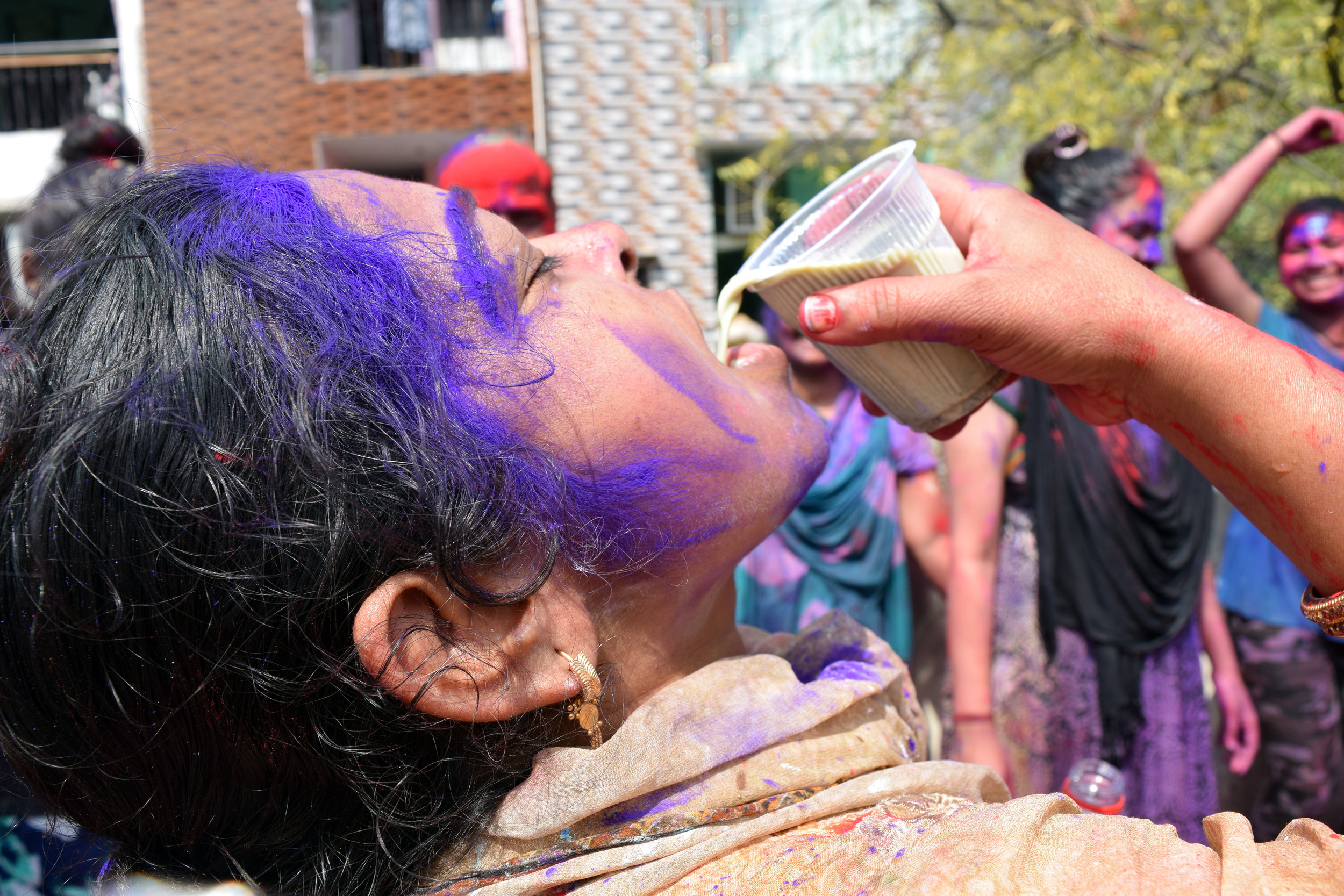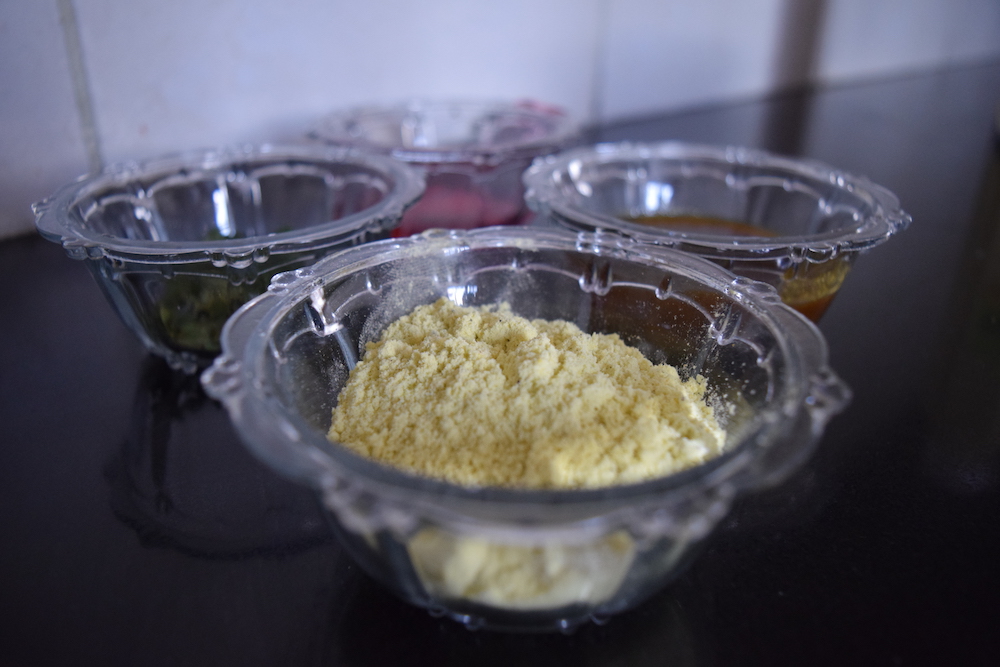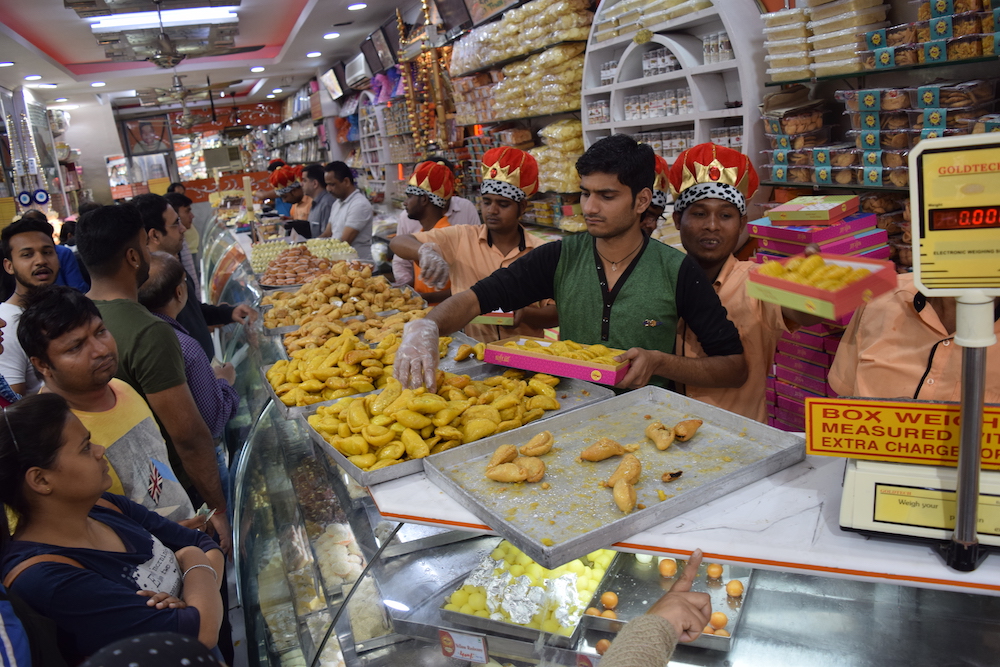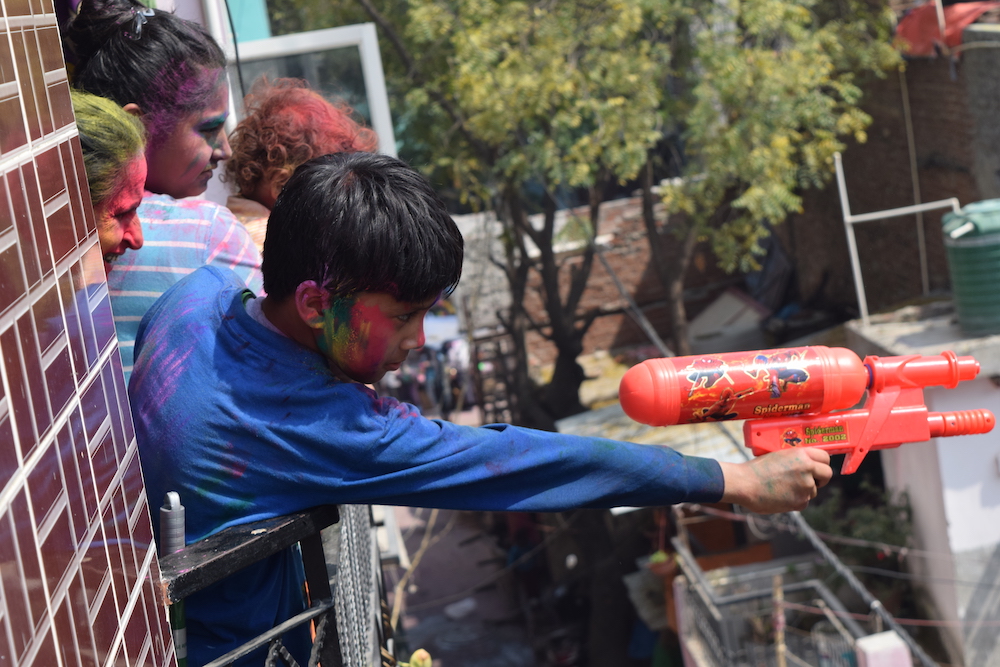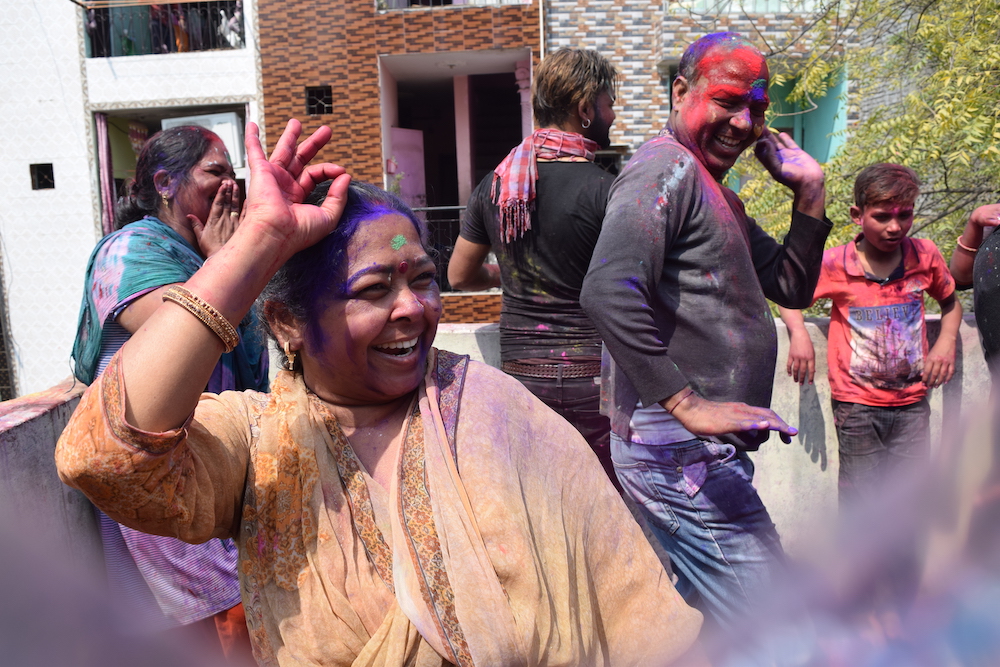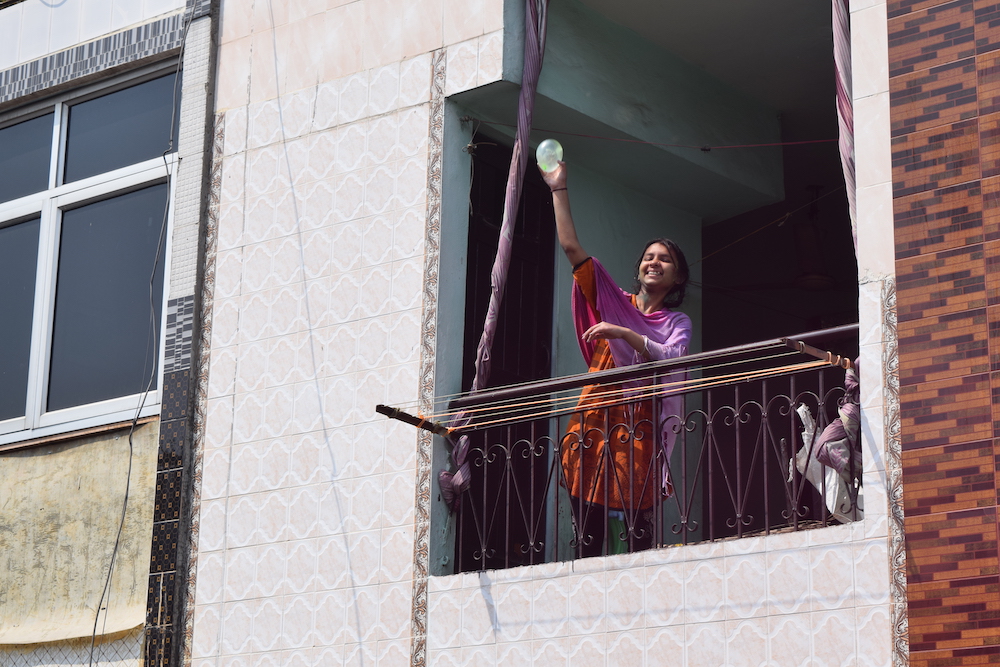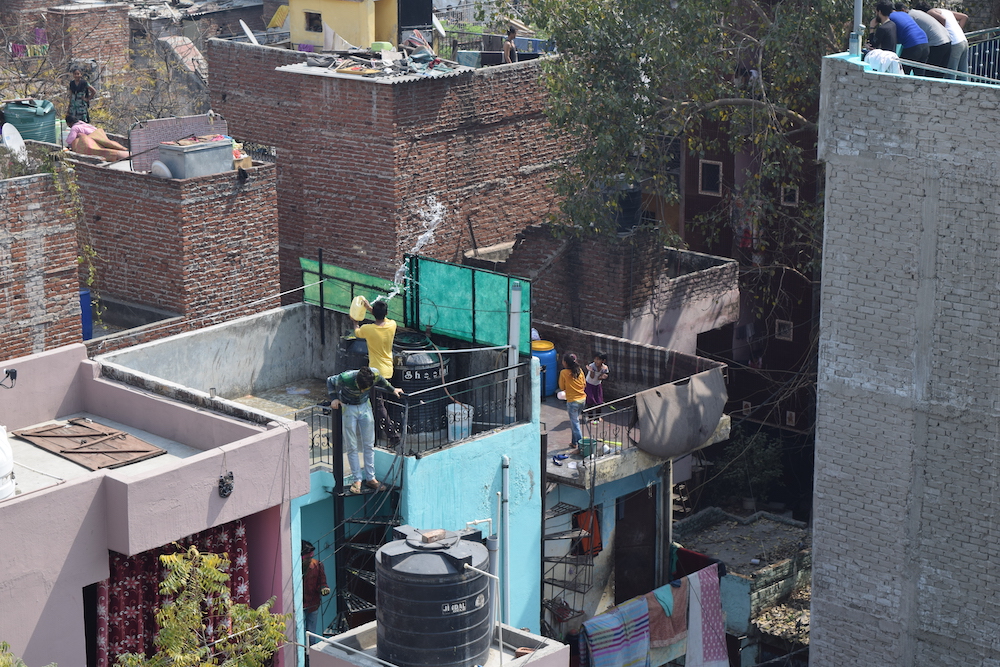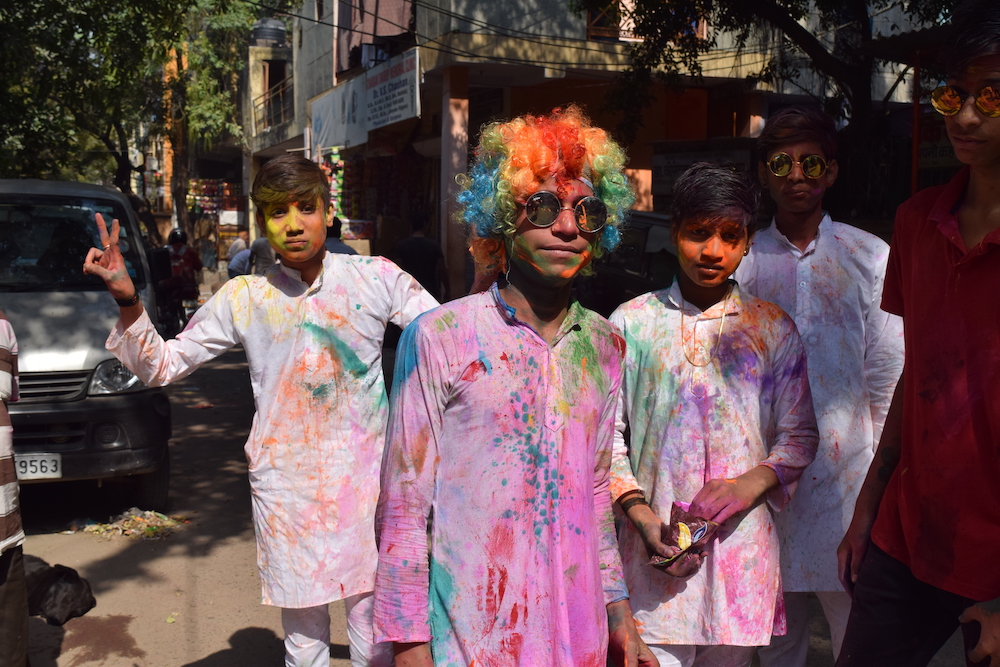Holi Festival Shows Cannabis' High Place in Hinduism
A woman drinks bhang thandai on her roof in Delhi on Holi Mar. 21, 2019. Photo by Meagan Clark.
NEW DELHI— Cannabis has long held a high place in Hinduism, unlike the Western vices of alcohol and tobacco. No other day is this more apparent than during the ancient Hindu festival Holi, on Mar. 21, 2019.
Every year, Indians welcome the arrival of spring with Holi, also known as the festival of colors. The two-day Hindu new year celebrations start with a bonfire to pray away evil. The next morning, the streets turn into a battle field as kids and gleeful adults hurl water balloons off balconies, squirt water guns and swipe colorful powders on anyone within range. In the spirit of Holi, no one is off limits.
A young girl dances with her family to drum beats in front of a bonfire on Mar. 20, 2019, the night before Holi. More than 100 people gathered from an urban village in Delhi to pray their internal evil will burn away like Holika, the sister of a demon, was put to death in Hindu scriptures. Photo by Meagan Clark.
For the fire ritual on Choti (small) Holi on Mar. 20, a woman pours water as on offering to god after her husband threw coconut onto the blaze. Photo by Meagan Clark.
A boy dances to drum beats during Holika Dahan, an annual evening Hindu ceremony to pray away evil and welcome the new year and springtime. Photo by Meagan Clark.
A man dances at a Holi rooftop party in Delhi on Mar. 21, 2019. Photo by Meagan Clark.
A boy shoots water onto his neighbors in Delhi three stories below as part of Holi celebrations. Photo by Meagan Clark.
In the same spirit, some traditional Holi drinks and sweets contain bhang, a potent paste of crushed cannabis leaves and buds (pronounced like “bong”). Depending on the region of India, bhang is added to everything from gujiya (fried dumpling sweets) and pakora (fried chickpea flour pockets of onion or potato) to lassi (a yogurt-based drink) or thandai (a blend of crushed dried fruits, nuts, sugar and spices in a milk base). You can also eat bhang straight as goli, a ball of crushed leaves and water with or without sugar and spices.
(From left: gujiya, thandai powder, inside a sweets shop during Holi, and jalebi, a fried dough sweet similar to funnel cake.)
Mohit, a chef in the greater Delhi region, spent the week preparing thandai mixes to sell online through a Facebook page and WhatsApp forwards.
“We can only say we’re selling thandai, nothing about bhang,” he said, “but people know it’s special thandai. Why else would they order it?”
Thandai can be purchased at nearly any corner store or sweets shop, especially leading up to Holi. It’s served chilled or room temperature, as a cool drink for the start of the spring, when it’s starting to heat up.
Bhang, on the other hand, is more difficult to obtain. The only legal means of purchasing bhang are through government-run shops, and their availability depends on regional customs. Bhang tends to be more popular in conservative Hindu areas where alcohol is more taboo.
Bhang goli (balls) in a government shop in Noida, Uttar Pradesh, India. Cannabis leaves and seeds are crushed finely with a mortar and pestle and then soaked in water to achieve the texture of a paste. Each goli above can get 5-6 people high if they haven’t built a tolerance to cannabis. Photo by Meagan Clark.
In Delhi’s National Capital Region, with about 35 million people, there’s only one shop. Most people who want to celebrate with bhang on Holi buy it illegally.
“We had a guy leave at 4 am to UP [neighboring state Uttar Pradesh] to collect bhang all day,” Mohit said, two days before Holi, so that the driver would return before police checks for drugs increase. “He’ll come back by evening, hopefully with enough bhang to fill our orders.”
Into the weeds: India’s history of cannabis
Though growing, possessing or using marijuana is illegal across India (except for government-regulated production and sale for bhang and hemp), it’s widespread. The cannabis plant grows like a weed in gardens, forests and especially, the Himalayan foothills and mountain regions, where you can spot it lining the road ditches.
The Vedas, Hindu scriptures dating back to 2000 to 1400 BCE, teach that cannabis is one of the earth’s five most sacred plants, and Ayurveda (traditional Indian medicine) prescribed cannabis as medicine as early as 6 BCE. When the British came to India, they were so intrigued by Indians’ widespread use of marijuana that they commissioned a report on its social and moral impact. The 1894 report concluded that criminalizing “so gracious an herb as cannabis would cause widespread suffering and annoyance.”
During the British colonial period, cannabis use was more common than today, likely due to increased alcohol and tobacco consumption and the imported stigma of cannabis. A 1961 United Nations treaty lumped cannabis with hard drugs and banned its production and sale except as medicine or for research. India tried to push back on the proposal, arguing cannabis is a religious and cultural tradition. In the end, India compromised to define bhang, procured from cannabis leaves and seeds, differently than marijuana (also called ganja in India), procured from the flower. Only the flowering part of the cannabis plant was banned.
The treaty gave countries like India 25 years to enforce the law fully, and at the end of that time, the Indian government passed a domestic drug law that conformed to the treaty. The difference is that India’s laws are still lax on recreational marijuana use, capping a sentence at six months for possessing up to a kilogram of weed.
Getting high as the heavens
The Vedas teach that the gods compassionately gave cannabis to humans to relieve our anxiety and fear and give us more joy.
Lord Shiva, part of the Hindu trinity and god of destruction and transformation, is often depicted with long, knotted hair or a top knot bun, smoking marijuana or drinking bhang. According to his legend, Shiva fell asleep under a cannabis plant after a heated argument with his family and then woke up feeling fresh and peaceful. So cannabis became Lord Shiva’s favorite pastime.
Another legend says that gods and demons stirred up the ocean to create a drink of immortality, but doing so created a deadly poison. Shiva drank the poison to save everyone (similar to Jesus), and was offered bhang to recover.
Today, many Shiva followers worship him by smoking marijuana, which the Indian government allows for true religious intent. Shiva sadhus, or self-imposed ascetic monks, can sometimes be seen sitting cross-legged on sidewalks, often half draped in saffron robes and dreadlocks, smoking pot.
It’s also believed that Shiva went to the Himalayas to meditate, where marijuana is more abundant.
“We’ve never seen any god but we believe that they take bhang for meditation, for concentration of mind,” said Piyu, an IT professional who frequents a government bhang shop in Noida, inside the Delhi National Capital Region. The shop is adjacent to two temples, with the temple next door in honor of Sai Baba, a Hindu saint believed to have been a reincarnation of Lord Shiva.
“Whatever Lord Shiva has done, it is for the good of others and for truth,” Piyu said.
Taking bhang helps his depression and insomnia, Piyu said, but still he warned me: don’t get addicted.
“People are just using Holi as a way to justify their use,” Piyu said. “It’s only okay to use bhang in moderation.”

